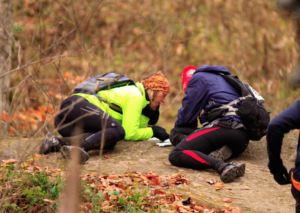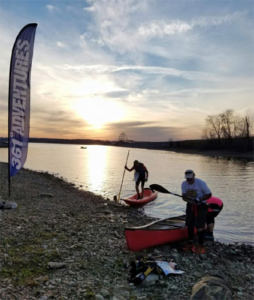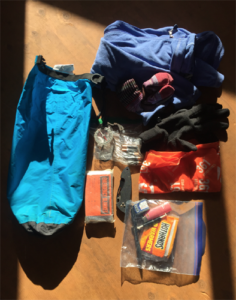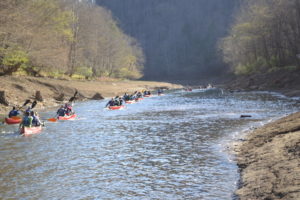by Jess Evans
February 16, 2018
This is a subject I have often struggled with because I want to be a good racing teammate, but sometimes it is hard to know what to do for your fellow teammates and what will be truly helpful. I have raced on both Co-Ed and All-Female teams. I feel that my role varies depending on which type of team I am on and the length of the race.
While I am a strong and dedicated racer, when I race on a Co-Ed team, I am not physically strong enough nor fast enough to support the team in that aspect. Therefore, I offer other types of support. I can assist with making navigation decisions, navigate when the primary navigator is tired, set the pace at a reasonable speed (often my speed), carry the punch card and punch the checkpoints, talk about anything to improve moods or wake people up, sing to keep things lively, tell bad jokes, offer suggestions when problems arise, be the secondary alarm clock, or remain silent when inner reflection is necessary. All of those tasks are helpful for a team, especially in a multi-day race.
On an All-Female team, my role is different because I am with fellow females, where our strengths and weaknesses overlap. I can do many of the same actions as mentioned in the Co-Ed team list, but I can also tow someone on bikes, carry someone’s pack, allow a tired teammate to hang onto my pack during trekking, offer to lighten a teammates load in other ways, be aware of fatigue and encourage resting periods, and take the lead when necessary.
Interestingly enough, I feel I am more of a leader on the All-Female teams and have more of a support role on the Co-Ed teams. What kind of male/female role psychology is going on in my head? I will not dwell on that, and besides, Casey Hill’s husband is studying that very subject. When he concludes his work and presents his paper, I think it will be very interesting to read.
This is my view of what makes a good teammate. Each person on a team can offer valuable assistance to the entire team throughout a race. Talk to your teammates to find out what they need and how you can be of help. Reveal what helps you to get through hard times. Do not push your teammates too much where injury becomes possible. Keep the pace as fast as the slowest racer on the team. Sustain emotional balance as much as possible and be civil to your teammates. Each of you are struggling and excelling at different moments. Support each other through the good and the bad.

 If you are into adventure sports and racing, the
If you are into adventure sports and racing, the  Well… it turns out, I am a “Splitter”. When I create folders on my computer, I must have folders within folders to be more specific as to what I am filing. When I make lists for adventure race preparation, I do not have broad reaching categories, I am specific. I do not just have a food category, I have 4 columns with “pre-race food”, “pack food”, “TA food”, and “post-race food”. For expedition races, I even have columns for “calories per food type”, “quantity of that food type required”, and “weight of each food type”. For example, my homemade biscuits (which do not last an entire 6 day race, I discovered) are about 400 calories and weigh about 0.25 pounds. (Yikes! That is a heavy biscuit.) I took 18 of them with me on the Cowboy Tough 6-day race, but ended up throwing away half of them… so sad.
Well… it turns out, I am a “Splitter”. When I create folders on my computer, I must have folders within folders to be more specific as to what I am filing. When I make lists for adventure race preparation, I do not have broad reaching categories, I am specific. I do not just have a food category, I have 4 columns with “pre-race food”, “pack food”, “TA food”, and “post-race food”. For expedition races, I even have columns for “calories per food type”, “quantity of that food type required”, and “weight of each food type”. For example, my homemade biscuits (which do not last an entire 6 day race, I discovered) are about 400 calories and weigh about 0.25 pounds. (Yikes! That is a heavy biscuit.) I took 18 of them with me on the Cowboy Tough 6-day race, but ended up throwing away half of them… so sad. Let’s look at the 361° Adventures
Let’s look at the 361° Adventures 
